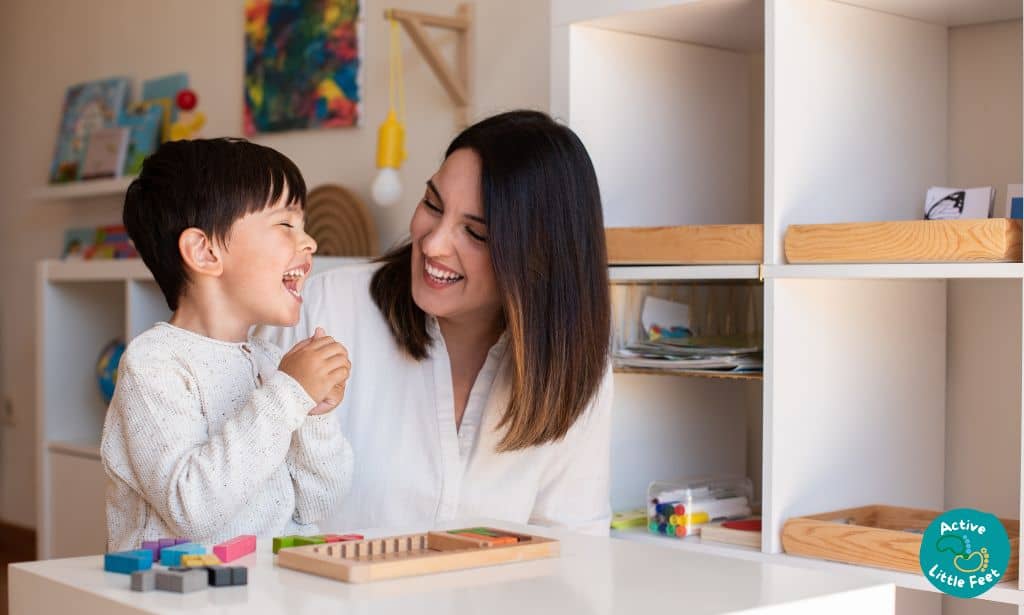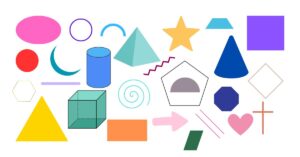Puzzles have been used in therapy for many years, and research shows they offer a range of cognitive benefits. A 2019 study, for example, found that jigsaw puzzles improve cognitive functions such as problem solving, memory, visual perception and focus.
But can puzzles help with ADHD, specifically in children?
Puzzles are one way to improve ADHD symptoms by training the brain and enhancing cognitive abilities. Working with puzzles regularly helps with clarity and organization of thoughts in the child’s mind, improves focus and concentration and also promotes calmness and relaxation in an otherwise chaotic and overstimulated mind.
In this article, we will explore more about the relationship between puzzles and ADHD and also recommend the best puzzles for kids.
But first…
Relationship Between Puzzles and ADHD
ADHD stands for Attention Deficit Hyperactivity Disorder. It is a mental disorder characterized by hyperactivity, impulsive behavior, attention inadequacy, among other symptoms.
In layman’s terms, an ADHD mind has difficulty organizing and processing information calmly and sequentially. A person who has ADHD feels like all the information in their head is coming to them all at once, and this results in agitation, hyperactivity, distraction and the urge to fix things all at once or do something.
ADHD presents itself as;
- Predominantly hyperactive or impulsive. Fidgety, easily bored, irritable and feels the urge to be on the move and do something all the time.
- Predominantly inattentive. Difficulty focusing or paying attention, easily bored, easily distracted and very forgetful.
- Combination of both.
If left untreated, ADHD develops to cause issues with education achievement, making and keeping relationships, mental health issues like depression, low self-esteem and anxiety, and trouble with the law.
Thankfully, many treatment options are available, from medication to therapy and alternative therapies like games (puzzles, chess, red light green light, etc.).
For years, it was thought that a person’s brain was made with an adequate supply of brain cells and could not change or produce additional brain cells. However, Neuroscientists have discovered the brain’s ability to grow additional cells and change like muscles, a process known as neuroplasticity.
Exercising and training the brain with games such as chess and puzzles is one fantastic way to change the brain. Puzzles, to be specific, have been recommended to produce the desired changes in how the brain works and improve cognitive functions. This is how they help kids with ADHD better handle their thoughts and cognitive processes.

How do Puzzles Help with ADHD?
What are these cognitive abilities and processes that puzzles help improve in ADHD kids?
1. Improve Focus and Concentration
Poor concentration and inability to pay attention for long are the hallmark characteristics of ADHD. With their intriguing patterns, shapes and colors, puzzles have the ability to captivate the mind and draw all attention to the activity at hand. This trains the brain to focus briefly until the child learns to concentrate for more than a few seconds.
Puzzles create what we call a ‘flow state’, where the child’s mind is fully absorbed in the activity, and distractions are shut out.
In the beginning, they will not be able to stay focused on solving the puzzle for long either, and boredom will kick in after a minute or so. It is up to the guardian to help keep the child focused on the puzzle a little bit longer every day so the brain rewiring can work.
2. Provide a Calm, Therapeutic Outlet
Another issue ADHD kids experience is restlessness, anxiety and hyperactivity. Because of the mind absorption we mentioned above, puzzles provide a soothing and therapeutic environment, help regulate emotions, and promote relaxation.
And depending on the individual puzzle, it can also offer an outlet for excessive energy and an alternative medium to focus on instead of all the other things going on in their head.
3. Enhancing Short-Term Memory
Puzzles are an excellent training ground for improving the forgetfulness and impulsivity that comes with ADHD. Tackling puzzles requires you to remember shapes, colors and patterns you saw seconds ago because they will help with your next decisions. This exercises part of the brain that holds short-term memory and also enhances attention to detail.

4. Develop Cognitive Skills
Another issue ADHD Kids deal with is executive function- the ability to plan, organize and problem-solve in your head. Completing a puzzle demands skills like spatial reasoning, logical thinking, pattern recognition and organization.
When a child engages in puzzle solving regularly, their brain starts to develop these cognitive abilities that ultimately transfer to other aspects of life like education, daily tasks and relationships.
5. Boredom Relief and Dopamine Increase
Studies show that intense boredom is a core symptom of ADHD, and one of the reasons why they can’t pay attention for long. The desire to avoid this boredom leads the child to engage in problematic activities like jumping into conversations or causing trouble in class.
In essence, this boredom is caused by lower dopamine levels in the brain, which communicates reward and regulates focus. This causes a person to lose focus fast, especially in things that don’t excite them and also look for more stimulation.
Puzzles are a stimulating activity that helps raise dopamine and stimulate the reward center. As the child successfully puts together the puzzle step by step, their reward center gets fulfilled, and this lowers the need to seek stimulation. With time, the brain learns to produce a certain level of dopamine and maintain it at that level.
What Puzzles are Best for ADHD?
The best puzzles for ADHD depend on the child’s symptoms. However, all puzzles can help rewire the brain and help improve most of the symptoms. The important thing to note when choosing is that the puzzle must be just the right amount of challenge and captivating enough because ADHD kids get bored quite fast with things that seem complicated or boring.
That said, the puzzles neuroscientists recommend most for ADHD kids include;
1. Inset Puzzles
Inset puzzles are physical non-connecting pieces mostly made of wood. The pieces come in different shapes and may have images of fruits, veggies, animals, or even vehicles. They are perfect for toddlers and preschool kids who are not old enough to solve jigsaw puzzles.
The idea behind inset puzzles is really to train a child’s brain to focus on one thing long enough and also provide a calming, therapeutic outlet. What’s more, these puzzles can help teach the alphabet, numbers, animals or whichever other subject.
2. Frame Puzzles
Frame puzzles are a fantastic foundation for jigsaw puzzles, and they are ideal for younger kids in preschool and lower elementary. The puzzle is made from cardboard, and the interlocking pieces all fit in one frame.
The difference between this and a jigsaw puzzle is that the frame assists in placing the pieces in the correct places because it has shapes already outlined on it, like a puzzle blueprint. Again, the idea is to provide a child with a calming activity that will train their brains to focus, and also work on other cognitive functions like short-term memory, planning, and organization.
3. Jigsaw Puzzles
As the child gets to a certain age, a jigsaw puzzle would be ideal. They have to figure out where each interlocking piece goes, and that calls for a lot of focus, organizing thoughts, problem-solving and perseverance.
Jigsaw puzzles also force both sides of the brain to work together, and completing each part floods the brain with dopamine. The more the child solves the puzzle, the more exciting it gets, which means they can work on it a little more.
Start with a simple jigsaw puzzle of an image the child is familiar with such as an animal, vehicle or person before moving on to planets and cities.
4. 3D Puzzles
Three-dimensional jigsaw puzzles are the most advanced for kids and require ample time and focus. But if the child is a fan of cars or transformers, they will enjoy trying to assemble this puzzle.
The benefit of a 3D puzzle is that it forces the child to concentrate and problem-solve. It’s the best way to rewire and retrain the brain and grow new connections, especially in an older kid. The challenge is high enough, so the reward will be even better when they finally assemble all the pieces.
5. Crossword
Crossword puzzles are designed to make people think as they find the right words to fill the vertical and horizontal blocks. The game also comes with hints and clues, so it’s educational and not so challenging.
This is a fantastic tool to strengthen a child’s cognitive skills and develop their critical thinking and concentration skills. Check out this resource, where you can print puzzles for free.
6. Word Search Puzzle
In a word search puzzle, the grid contains scrambled letters with hidden words. The child should focus and find the hidden words in that chaos either horizontally, vertically or diagonally. Sometimes you are already provided with a list of words to search for, but older kids do not get this list.
Word puzzles require great concentration, so the child must calm down their thoughts and focus on finding words in that letter mess. It’s also an excellent dopamine injection because you get excited with every word you find.
7. Sudoku
Finally, Sudoku is a fantastic puzzle for older ADHD kids. It consists of a 9×9 grid sectioned into 9 smaller grids with 9 blocks each. Each block contains some numbers from 1-9, and the aim is to fill in the blanks without repeating the same number on a row or column.
However, Sudoku will only captivate the attention of some kids. It is mostly ideal for children who love numbers and solving mathematical problems. Sudoku is a great way to improve memory and abstract reasoning, teach focus and patience as well as train their logical thinking skills.
Are Kids With ADHD Good At Puzzles?
Kids with ADHD love to figure things out, solve problems and construct models or art projects out of wood and metal pieces. This is because such puzzles offer an immediate reward (dopamine rush) that an ADHD brain tends to seek out for. Puzzles also lure out the ADHD brain’s ability to hyperfocus and create something from nothing.
Is Jigsaw Good for ADHD?
Jigsaw puzzles are fantastic for ADHD because they engage both sides of the brain. The left side thinks rationally, while the right side thinks creatively and imaginatively. The union of these two sides enables clarity and organization of thought, which produces dopamine. Besides, working out jigsaw puzzles rewires the brain and reroutes broken connections, making them whole again.




